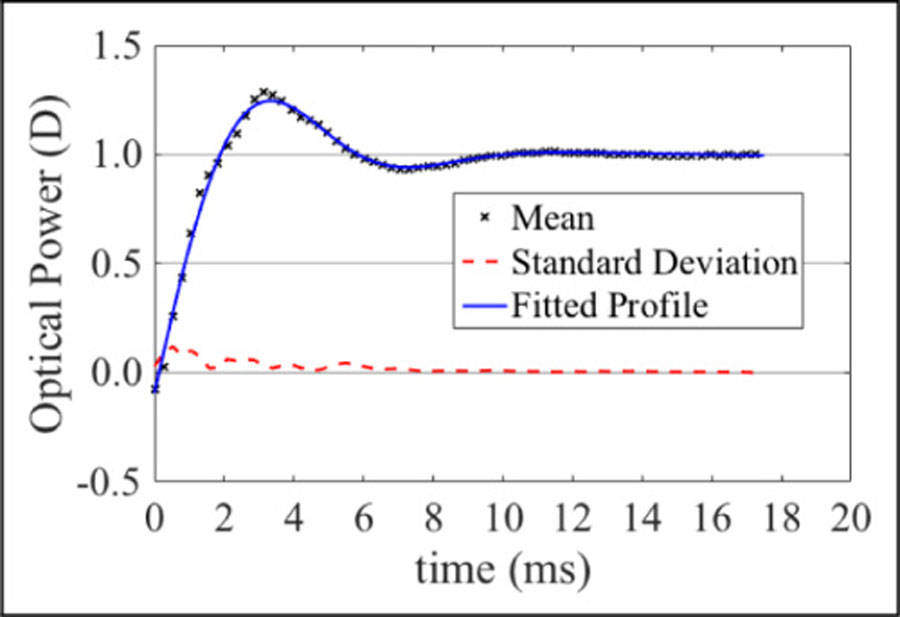Citation
de Gracia P, Dorronsoro C, Sanchez-Gonzalez A, Sawides L, Marcos S. Experimental simulation of simultaneous vision. Invest Ophthalmol Vis Sci 2013 Jan 17;54(1):415-422. For more information, click here.
Abstract
Purpose
To present and validate a prototype of an optical instrument that allows experimental simulation of pure bifocal vision. To evaluate the influence of different power additions on image contrast and visual acuity.
Method
The instrument provides the eye with two superimposed images, aligned and with the same magnification, but with different defocus states. Subjects looking through the instrument are able to experience pure simultaneous vision,
with adjustable refractive correction and addition power. The instrument is used to investigate the impact of the amount of addition of an ideal bifocal simultaneous vision correction, both on image contrast and on visual performance. The instrument is validated through computer simulations of the
letter contrast and by equivalent optical experiments with an artificial eye (camera). Visual acuity (VA) was measured in four subjects (age: 34.3 6 3.4 years; spherical error: 2.1 6 2.7 diopters [D]) for low and high contrast letters and different amounts of addition.
Results
The largest degradation in contrast and visual acuity (~25%) occurred for additions around 62 D, while additions of 64 D produced lower degradation (14%). Low additions (1– 2 D) result in lower VA than high additions (3–4 D).
Conclusions
A simultaneous vision instrument is an excellent tool to simulate bifocal vision and to gain understanding of multifocal solutions for presbyopia. Simultaneous vision induces a pattern of visual performance degradation, which is well predicted by the degradation found in image quality. Neural effects, claimed to be crucial in the patients’ tolerance of simultaneous vision, can be therefore compared with pure optical effects. (Invest Ophthalmol Vis Sci. 2013;54:415–422) DOI:10.1167/iovs.12-11219

